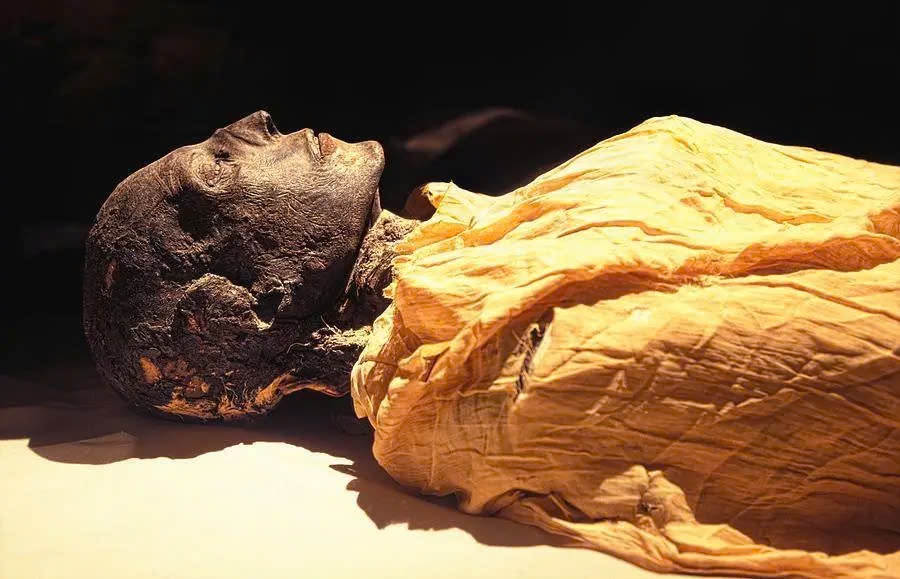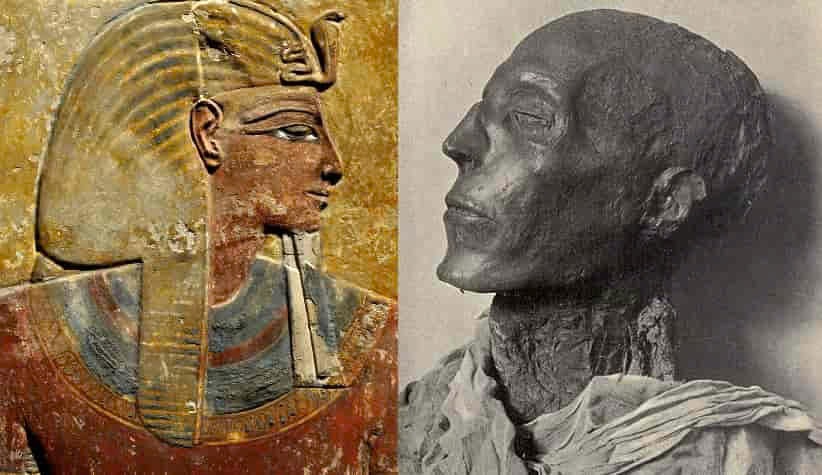In the heart of ancient Egypt, a remarkable discovery was made when the mummy of Pharaoh Seti I, a powerful ruler of the 19th Dynasty, was unearthed. Seti I was originally buried in an exquisite alabaster sarcophagus in the Valley of the Kings but was later relocated to the Deir el-Bahari Cachette, where his remains were preserved for future study. Despite suffering damage from time and tomb robbers, his head remained remarkably well-preserved, while his body endured more extensive harm.

Examinations of the mummy revealed that Seti I died unexpectedly before reaching the age of 40, with the cause of death remaining a mystery, as no signs of violence were found on his remains. His reign was marked by significant military campaigns that expanded Egypt’s territory and impressive architectural achievements, especially at the Temple of Karnak, where he contributed to its construction and decoration.

Perhaps Seti I’s greatest legacy is his son, Ramesses II, who would solidify the 19th Dynasty’s place in history. Today, Seti I’s mummy is displayed at the National Museum of Egyptian Civilization in Cairo, symbolizing the lasting fascination with ancient Egypt and providing valuable insights into burial customs and daily life during the New Kingdom period.


